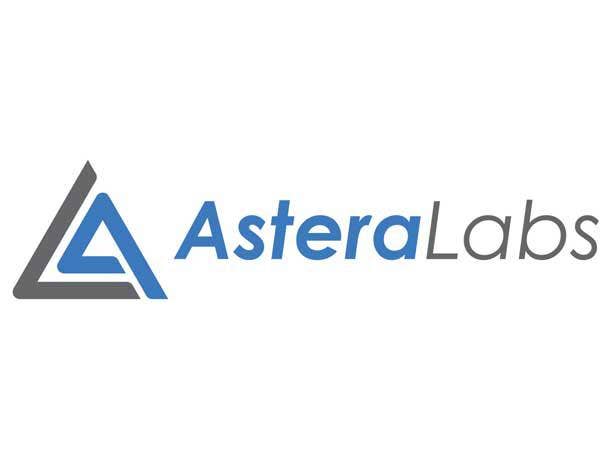Astera Labs CEO: ‘We Could Be The Broadcom’ Of CXL Solutions
The California-based chip connectivity firm has seen growth every quarter after investing in emerging semiconductor technology.

Astera Labs’ rising star has not dimmed even as a softening global economy casts a shadow over the tech industry. And CEO Jitendra Mohan told CRN that the Santa Clara, Calif. startup’s chip connectivity focus will continue to sharpen along with its channel partnership vision.
The young company recently said its valuation had reached more than $3 billion after a successful $150 million fundraising round led by Fidelity Management & Research. Founded in 2017, Mohan attributes the company’s meteoric growth to its early investment in the cloud and emerging connectivity tech. Its signature product, the Leo Memory Connectivity Platform, enables servers to create a unified coherent memory space between CPUs, and accelerators.
“We find ourselves in a very interesting market and we believe the market we’re addressing will continue to grow to $10 billion in TAM (total addressable market),” he said in an interview. “And it’s split across CXL (Compute Express Link), across ethernet, across PCIe Retimer class of products… we find ourselves in the position that we could be the Broadcom of this. So that’s really what we’re focused on – bringing newer and newer products to the market, addressing our customers needs and talking to customers who can really drive growth.”
Astera was an early tester of CXL along with Intel Corp. CXL works with the current PCIe Gen 5 as a new open interconnect standard that targets intensive CPU workloads. And it’s quickly becoming a new standard for advanced computing needs, especially in cloud applications by easing bandwidth bottlenecks and increasing capacity. “When we were first working with CXL, it didn’t even have a name yet,” Mohan said. “The scale of CXL became even larger than we anticipated.”
What makes Astera’s story so compelling is that the company’s prospects keep soaring even as all chip firms have suffered declining sales in 2022. Mohan attributes the company’s good fortune to tying itself to the right niche.
Mohan declined to disclose revenue figures for the private company but said Astera had experienced growth every quarter since its inception. “We’ve done fairly well and we’ve established a leadership position in the market because of the technology that we have and the innovation we have – but also the execution. Our team has been just stellar in delivering on the milestones our customers set for us.”
Here’s more of what Mohan had to say in an interview with CRN:

What is your goal for Astera Labs’ growth in the next five years?
We find ourselves in a very interesting market and we believe the market we’re addressing will continue to grow to $10 billion in TAM (total addressable market). And it’s split across CXL (Compute Express Link), across ethernet, across PCIe Retimer class of products… we find ourselves in the position that we could be the Broadcom of this. So that’s really what we’re focused on – bringing newer and newer products to the market, addressing our customers needs and talking to customers who can really drive growth.
How do you make your product stand out in a crowded semiconductor market?
One of the strengths of our company the ability to see where the market will end up and where the customers will need their solutions. We anticipated that as customers go from PCI Express Gen 3 to Gen 4, they will need a signal integrity solution. What was new was that these new workloads would be larger and would require a different type of solution to be deployed in the cloud. We focused on reducing the latency in our products and adding a level of diagnostics that customers could really operationalize and include in their own software stack. So that was our differentiation. And we went to our customers, and we told them, ‘This is what you will need. And this is what we will deliver.’

Where do you see the semiconductor industry going in the next five years?
Nobody has a crystal ball. I think it’s going to be choppy, but as a private company, we are in a better position to continue to execute, to continue to hire and to continue to build really, really great products. So, we can take advantage of whenever the market turns around. And it will turn around. It’s a really interesting time to be in the semiconductor market. There is a lot of innovation that’s happening. There is a log of changes that are happening and different types of workloads that are coming in. And whenever there is change, there is opportunity for innovation. CXL is a prime example. The standard is not even three years old, and you can see how widely its being adopted.
What is driving growth at smaller private companies in the semiconductor space right now?
It really goes to the heart of how companies innovate. When you go to an established company, people don’t want to take too much risk, to be completely honest. The risk profile is different in a large company because you have to get in front of shareholders in the market and talk about what you’re going to do, what your expenses are and so on. When we started Astera Labs, it was like, ‘look, we’re all in on this and if it doesn’t work, we go home.’ That really drives a very different type of behavior that drives a very different type of risk taking and focus and execution. Not everybody will succeed. But the pace of innovation is very good in private companies.

How do you see emerging technology developing in the future?
Overall, I would say that the cloud and data center market is the safest place to be right now. They will continue to grow over the longer term… the move to cloud for compute, there’s no stopping it simply because the pace at which the AI models are growing. The model complexity doubles every three to four months. There is no way that any data center can keep up. You need to have the scale of the cloud service providers to be able to do that… As consumers, we’ve gotten used to these things – if Netflix doesn’t recommend the right movie, I look at Netflix and say, ‘What are you doing?’ If Alexa, or Google Home – if they don’t understand my voice properly, I’m not going to be happy about it. That’s the fundamental shift – the expectation of the customers. This will continue to drive a lot of growth in the AI space. And that can only happen in the cloud.
Why should channel partners choose to partner with you over competitors?
It works out to be what the end customer wants. We do what the customer wants and the channel will do what the customer wants. And certainly, we built products that we hoped our customers will truly benefit from. And at the same time, I think we work very well with our channel partners. We are all in this together. If we don’t succeed, they don’t succeed and if they don’t succeed, we don’t succeed. That’s the approach we’ve taken with our channel partners and with our vendors and I would say this is one of the reasons that we have been as successful as we have. When we started, we had 15 people (in the company), we’re now just shy of 200 people. We could not have done it if we did not stand on the shoulders of giants.